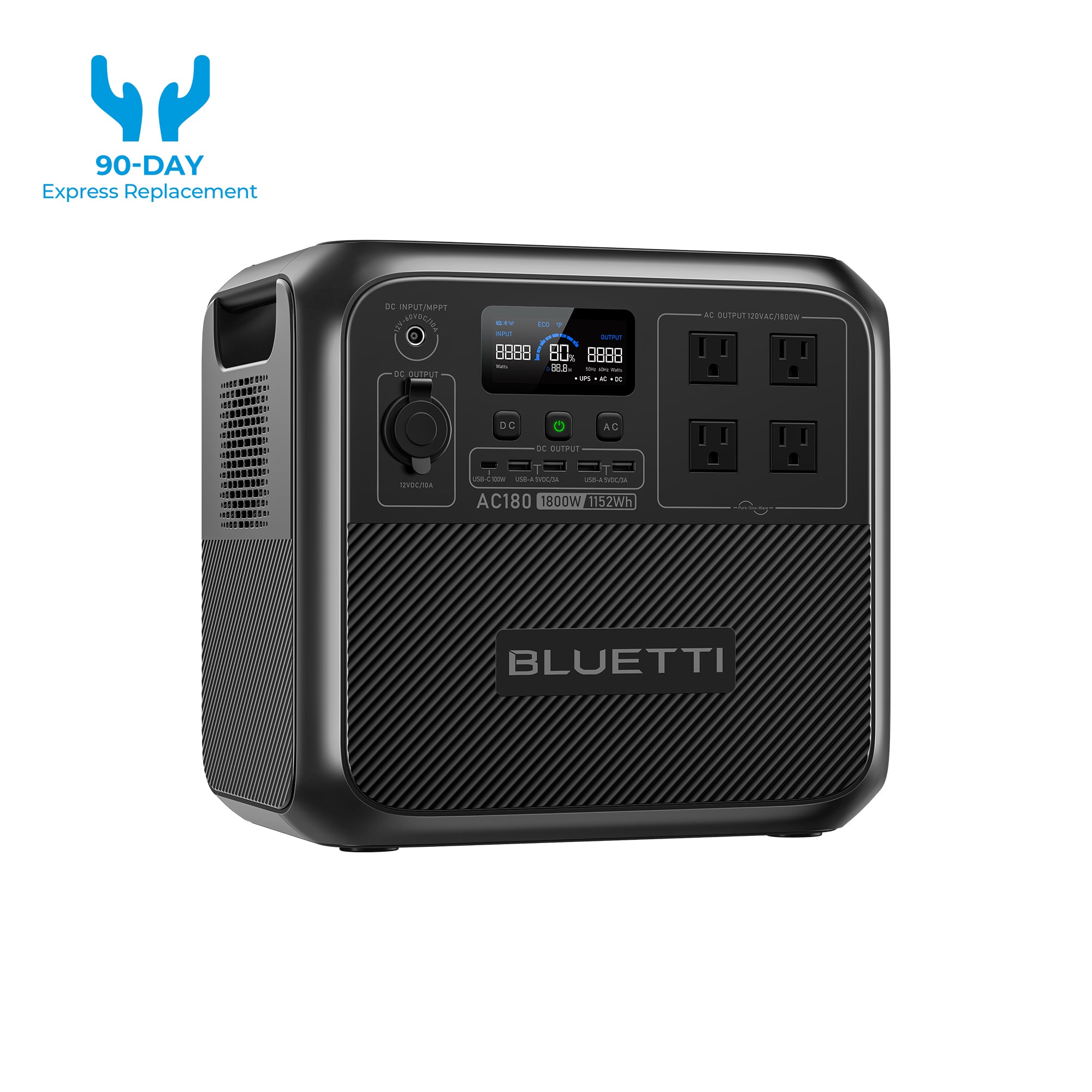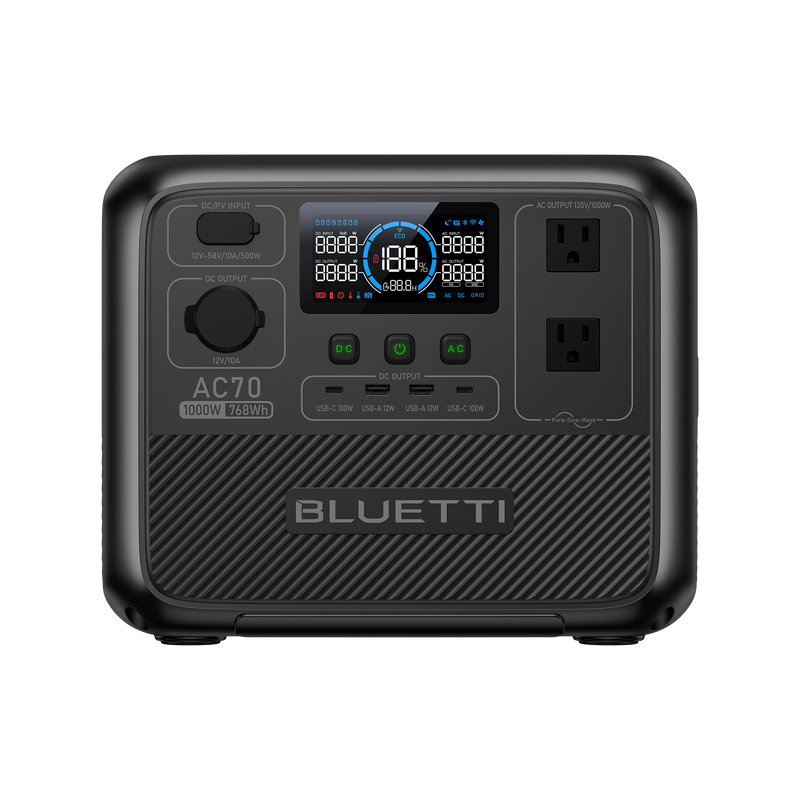Floods strike unexpectedly, causing significant destruction. While such a disaster is inevitable, that doesn't mean you cannot do anything about it. With a bit of courage and preparedness, you can strengthen your position to outlive a flood.
Let’s understand the magnitude of the damage a flood can bring:
-
The U.S. has witnessed about 44 floods to date, starting from 1980. Estimates suggest that there have been more than a billion dollars in damages, equating to $4.5 billion per year - courtesy of these floods.
-
Countless homes are destroyed due to these floods. However, only 15% of homes are insured against flooding. This means that only one out of every ten homes is insured.
-
As per statistics, 20.8 million properties in the US will be prone to flooding by 2053.
These statistics are alarming enough to make us take the threat of floods seriously. If you want to ensure your safety against a flooding event, make sure that you read to the very end!
Now - the question is how to stay prepared for a flood. Here are some practical tips on how to prepare for a flood. But before that, let's get to know more about floods.
Why Do You Need to Stay Prepared For a Flood?

I have witnessed firsthand what a flood can do and how much harm it can bring to my life. The day the flood hit us, everything changed. Our mundane life switched to absolute chaos.
The experience proved that floods deliver brief notice, and preparedness is essential during emergencies.
Flooding isn't a rare event. The unpredictable nature of climate change and abnormal weather patterns make any area vulnerable to flooding, no matter what statistics show. Here’s proof:
-
Around 25% of flood-related insurance claims come from low-risk areas. Yes, the areas that are less prone to flooding! This is enough evidence to say that no area can be truly labeled as a flood-safe zone.
Early response to flood preparation tactics lets you safeguard your loved ones and reduce the extent of damage. Having a prepared plan in advance provides you the mental clarity to focus on saving lives and restoring damage during rising water emergencies.
How to Prepare for Flood
Observe your surroundings. Heavy rainfall poses a considerable threat, even to locations that experience little rain throughout the year. Hence, the starting point should involve checking FEMA's Flood Maps, which provide reliable information about your flood risk level.
The FEMA website tools help identify flood-prone areas and water flow projections. Your area's layout analysis provides vital information for devising practical flood preparation methods. Property owners who identify flood-prone areas can quickly develop specific preventive measures by clearing drains and planning minor structural modifications.
Here are a few steps to help you map out your risk:
- You should refer to your city or county's planning office for historical data regarding floods.
- FEMA's Flood Maps, alongside other internet services, are valuable resources for obtaining flood visualization.
- The local community members possess knowledge of the neighborhood that exceeds traditional map information.
When you can detect risks in the earlier stages, you can get a hold of the situation and prevent it from getting worse. To do this right, knowing how to prepare for a flood matters because then you waste less time and avoid last-minute panics.
Come Up With an Emergency Plan to Protect Your Family and Belongings

After identifying potential dangers, your next task involves preparing your household for unacceptable circumstances. While an emergency plan sounds like a difficult task, it actually becomes one of the best safety measures you can establish to protect your family. When I advise friends about emergency preparedness, I point out that a dependable strategy protects both homes and human lives.
When building your emergency plan, keep these points in mind:
- Identify Key Needs: Assess every person who lives in your home, including children, the elderly, people with disabilities, and pets. The requirements of each household member should be considered during adverse situations.
- Map Out Evacuation Routes: Establish multiple evacuation routes from your neighborhood and choose specific locations for family reunion points.
- Set Up Communication Protocols: Plan communication protocols for emergencies when people lose contact. Mobile devices with backup power sources are essential in these circumstances.
Important Emergency Supplies to Carry Along!
If a situation arises where time becomes your most vital asset, make sure to have access to well-organized supplies; ones that offer life-saving functions. Everyone should establish readiness by keeping emergency kits available at home. The kit must contain convenient items for portability if evacuation or sheltering is required.
Your emergency kit should include:
- Pack adequate food items and drinking water for at least three days.
- A well-equipped first aid kit, plus any prescription medications.
- Survival depends upon having sufficient warm clothing combined with extra blankets.
- Tools and flashlights should always be packed along with backup batteries.
|
Item |
Purpose |
|
Food & Water |
3-day supply of non-perishable food and drinking water. |
|
First Aid Kit |
Includes bandages, gauze, antiseptic, and prescription medications. |
|
Flashlight & Batteries |
Provides light during a power outage. |
|
Backup Power Source |
BLUETTI AC180 or similar for powering essential devices. |
|
Important Documents |
Store copies of IDs, insurance policies, and medical records in waterproof containers. |
|
Warm Clothing |
Prevents hypothermia during cold flood conditions. |
|
Portable Radio |
Stays updated with emergency alerts. |
The Most Important Emergency Supply You Need: A Portable Power Station!

A single instant flood disaster can send your life into chaos. Therefore, an effective emergency plan is important because flood events cause power outages, blocked roads, and restricted access to essential services. And do you know what’s one of the biggest challenges during a flood? Keeping your power on. A dependable backup power solution matters significantly since it enables phone charging to communicate, and allows medical device operation and food preservation during emergency situations.
With that said, BLUETTI portable power stations provide emergency power solutions during floods through their solar-capable storage solutions that support quick charging and extended battery life durations.
BLUETTI AC180: A Reliable Power Backup for Flood Emergencies
BLUETTI AC180 functions as your backup power source, protecting you against extended periods of darkness triggered by flood water damage and power outages. At 16 kg, the AC180 is easy to carry, making it ideal if you need to move to higher ground.
-
It provides 9 output ports to plug in multiple devices simultaneously. This unit can also power lights, smartphones, and laptops and maintain operation. Moreover, a mini-fridge works from its output ports.
-
UPS (Uninterruptible Power Supply) mode engages itself within 20 milliseconds as a backup to protect vital equipment when utility power shuts off. Worried about a long power outage? Extend power availability by connecting the AC180 to B80 (806Wh) or B300 (3,072Wh) expandable battery modules.
-
You can charge this system from various sources, including home electricity, solar power, car, or generator power. Solar charging allows the unit to charge completely in 2.8 to 3.3 hours.
BLUETTI Alternator Charger: Essential for Evacuations
Bluetti Charger 1 is no less than a blessing when you’re facing a power outage.
-
With this charger, you can power up your portable station and keep your household items in running condition.
-
The Bluetti Charger 1 delivers a full charge of a one-kWh power station within 2.5 hours. Recharging your power station with up to 560W speed becomes crucial during emergencies.
Using the charger isn’t rocket science; it works on a simple plug-and-play mechanism.
BLUETTI AC70: Compact Power for Emergencies
If you need small portable power while maintaining high capacity, then this option serves your needs. The portable BLUETTI AC70 provides effective backup power in flood situations when the power grid fails.
-
The AC70 power station provides 768 Wh capacity and a base rate of 1,000 W until it reaches Lifting Mode. In this mode, the power doubles to 2,000W, thus making it suitable for running lights, CPAP machines, laptops, and small appliances during power outages.
-
Control your battery levels and usage data as well as system settings through the BLUETTI app using your smartphone.
What Can These Power Stations Run?
The power stations support vital devices by drawing power from their internal batteries during emergencies. The following list describes the main applications of these power stations.
-
Running lights and fans with a small refrigerator help prevent food spoilage.
-
Recharge smartphones, tablets, and laptops at any time.
-
Power CPAP machines, portable oxygen concentrators, and other minor medical devices.
-
Run TV and other radios to monitor emergency alerts and obtain news updates.
These devices ensure that when the unexpected happens, you know how to prepare for a flood by keeping everything from communication devices to essential appliances up and running.
Tips to Protect Your Home From Flood
To some extent, flood damage protection lies within our control despite weather conditions dictating unpredictable conditions. Home property floodproofing includes more than placing sandbags near doors since it requires specific modifications that reduce future repair expenses. Several brilliant DIY solutions exist to lift appliances and enhance drainage systems. They are:
- Lift major electrical devices above floor level if possible.
- Protect exposed areas by applying waterproof solutions to windows, walls, and doors.
- Regular maintenance, drainage, and gutter cleaning will keep water pathways flowing in the correct direction, away from your house.
- Installing sump pumps with battery backups.
- Sealing basement walls with waterproof coatings.
- Seek flood insurance if you're living in a high flood-risk area.
These preparatory measures can lower the stress levels and financial burden following flood events.
When you know how to prepare for a flood, you're better positioned to protect your home and your entire way of life.
What to Do When Floodwaters Inundate Your Space?
The best planning cannot prevent every possible flood situation. Taking immediate action requires precise knowledge of what steps to execute in such situations. Remaining calm while taking fast action is the main priority.
Here's what you should do as soon as floodwaters begin to rise:
- Use local alerts by listening to radio broadcasts and smartphone alerts during emergencies.
- Follow the local authorization instructions for evacuation because authorities may tell you to evacuate immediately.
- Secure critical papers inside waterproof containers for protection.
- Utilize portable power solutions to operate essential electronic devices during flood emergencies.
- Maintain communication with your family members through notifying them about your situation.
How to Ensure a Safe Recovery After You’re Hit by a Flood
The actual recovery process starts when floodwaters drain away. The recovery process after flooding requires systematic execution because it presents similar hurdles to floods.
Consider these recovery tips:
- A careful assessment of your home structure should be your first step before you return inside.
- Images and complete documentation of damage should be taken when submitting insurance claims.
- Destroy all items that have absorbed contaminated water.
- Engage in deep sanitation of the home because mold and other possible dangers need eradication.
- Seek help from professionals to repair severe elements.
The above tips are crucial to follow when preparing for a flood.
Final Words
Floods can be unpredictable and devastating, but being prepared can make all the difference in protecting your family, home, and livelihood. The key to navigating a flood crisis lies in proactive planning, having the right emergency supplies, and equipping yourself with reliable solutions like portable power stations to ensure critical devices remain functional during challenging times.
Flood preparedness is a collective effort that starts with individual action. With these tips in mind, you’re well-equipped to face the challenges of a flood and ensure the safety of your loved ones and property. Stay vigilant, stay prepared, and stay safe!









































































